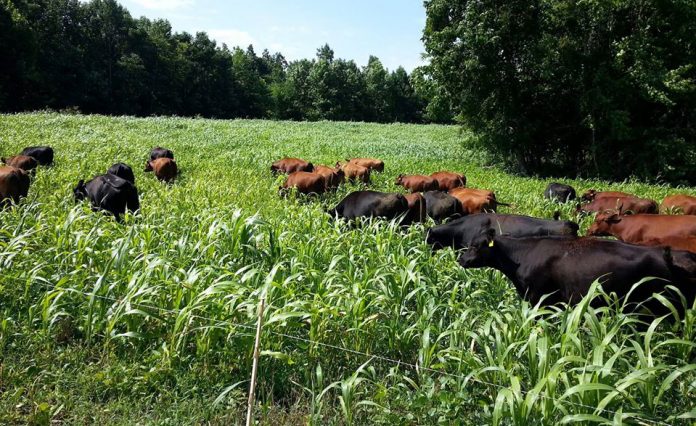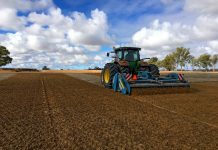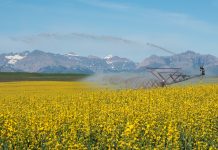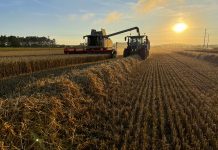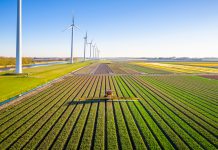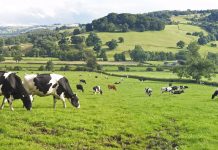Richard Teague, from Rangeland, Wildlife and Fisheries Management, Texas A&M University, provides more insight into sustainable agroecosystems, focussing on cropping using regenerative agricultural principles
Over the last century, intensive farming practices have had significant negative consequences for the soil and surrounding ecosystems. By disrupting the natural function of these habitats, the valuable ecosystem services they provide are compromised and are the source of the multitude of environmental issues we face as a society. Natural systems make up a complex web of interconnecting functions, with nothing operating at full health if parts of the system are damaged. Thus, we must consider these systems as a whole, examining not only how each component functions, but how they all fit together and interact in the bigger picture.
Agricultural production practices need to be guided by policies that ensure regenerative cropping and grazing management protocols to ensure long-term sustainability and ecological resilience of agroecosystems. It is not sufficient to aim at sustainability alone as we have substantially degraded our agroecosystems with negative consequences over substantial areas of the world. We need to regenerate the soil and ecosystem function. Changing current high-input agricultural practices to low-input regenerative practices enhance soil and ecosystem function and resilience, improving long-term sustainability and social resilience.

Soil health
Most current cropping practices directly damage the soil and ecosystem functions on which they rely by using tillage, inorganic fertilisers, and pesticides, damaging soil and ecosystem function, over time, reducing yields, and prompting even more intensive farming. This unsustainable vicious circle may ultimately lead to land that is damaged beyond repair and no longer suitable for agriculture. The soil degradation of these commonly used practices includes elevated soil erosion, soil organic carbon (SOC) loss, nutrient imbalance, soil sealing, acidification, salinisation, contamination, waterlogging, compaction and loss of soil biodiversity.

To initiate our research on the hypothesised benefits of regenerative agricultural management, we consulted with the NRCS scientists who have conducted nationwide soil mapping and soil testing laboratories to determine the farms that had the highest soil organic carbon in the nation. Without exception, these were farmers who have developed a regenerative model of farm production that promotes soil health and biodiversity, while producing nutrient-dense farm products profitably, using regenerative farming practices for up to three decades. Among these farmers, we determined which had achieved higher profits by regenerating soil and ecological function. This is of prime importance as we depend on farmers maintaining a high level of income that encourages them to adopt better environmental and health goals to benefit their businesses and essential ecosystem services.
Lower input costs, higher profits
Regenerative farmers have substantially lower input costs than conventional farmers because not only are fertiliser and fuel costs extremely low, but pests are more abundant in input-intensive cropping farms than on regenerative insecticide-free farms. In one U.S. study on commercial farms, fields with designed regenerative pest-resilient food systems outperformed those where pesticides were applied to control pests. The regenerative fields had 29% lower grain production, but 78% higher profits over traditional corn production systems, and profits were positively correlated with soil organic matter, not yield.
The metrics needed to fulfil regenerative goals includes (1) production of adequate amounts of high-quality food, (2) enhancement of the natural resource base and the environment, (3) financial viability, and (4) contribute to the well-being of farmers and their communities. Most academics deny that regenerative grazing and cropping management works at all, or is a viable option, and yet there is a large network of people around the world who increased their profits compared to when they started, simultaneously increasing soil health and ecological function. They have done so by explicitly improving soil health and soil organic carbon by managing to achieve the following:
- Improve plant cover of the soil,
- Minimise bare ground,
- Manage for perennial plants where possible, rather than annuals,
- Manage for most productive plants,
- Leave adequate plant residue,
- Manage for living roots and green leaves for as many days each year as possible and,
- Avoid tillage, inorganic fertilisers and biocides.
Importantly, the crops and livestock products produced on these healthy, functional soils have significantly higher nutrient densities that provide healthier food products than those from nutrient impoverished soils found with food from conventional crop and forage farming practices.

Farmers successfully using regenerative agricultural practices have done so using the following conservation practices:
- Changing plough tillage to no-till cropping and using precision agriculture to moderate the rate and timing of application of agrochemicals and water,
- Diversifying annual cropping systems to include legumes, perennial crops and forages in rotations,
- Using cover crops in conjunction with row crops to keep the soil covered, build SOC, soil fertility, keep living roots in the ground for as much of the year as possible to facilitate using evolved soil microbial biota to enhance soil fertility, and increase fungal to bacterial ratios to improve plant access to soil nutrients and nutrient cycling in the soil-plant system,
- Reintegrating grazing animals back into cropping systems; using pasture-ley rotations and pasture-cropping1,
- Using organic soil amendments, such as cover crops, manure, and biofertilisers,
- Reducing nitrogen (organic and inorganic) fertiliser use,
- Changing the type of fertiliser used (e.g., legumes, controlled-release and nano-enhanced fertilisers), and using nitrification inhibitors,
- Applying biotic fertiliser formulations that feed the soil microbial systems and improve mycorrhizal function, reducing N and phosphorus (P) runoff and groundwater losses,
- Improving grazing management, converting marginal and degraded cropland to permanent pasture, agroforestry, and restoring wetlands, and,
- Include soil conservation practices such as contour farming and strip farming, and use windbreaks, terraces, grass strips, and conservation buffers.
In contrast to regenerative farming, conventional crop and forage farming practices impoverish the farmers and consumers and do not alleviate human malnourishment and declining health. Livestock are traditionally kept in large open pastures to graze throughout the year, then intensively fattened in grain-based feedlots. When fed on grain, livestock production also inherits the issues associated with traditional crop farming. These practices lead to a damaged agricultural land and diminished provision of ecosystem services, including reduced rain infiltration into the soil and the need for more fertiliser input. Carbon storage in the soil — a vital ecosystem function in the fight against climate change — is significantly reduced. Leaving the ground bare encourages the growth of weeds and exacerbates the need for herbicides. Tilled fields devoid of vegetation cover exhibit more soil erosion, diminished rainfall infiltration and water storage ability. Excessive use of machinery fuelled by fossil-fuels to facilitate these intensive farming practices further amplifies the agricultural carbon footprint. If improperly fed and managed, livestock production increases the carbon footprint further.
Farming in a way that encourages a healthy agroecosystem alleviates many of these issues entirely. The problems of many current tillage-based cropping and feedlot-based livestock production systems can be avoided by ecologically sensitive management of crop and livestock production in mixed crop and grazing agroecosystems. Although ruminant livestock, such as cattle, has been widely criticised as being a significant source of greenhouse gases, if regenerative grazing is used in tandem with regenerative cropping practices, ruminants increase soil carbon sequestration well above their emissions and reduce the food production chain carbon footprint to reduce overall greenhouse gas emissions. This facilitates the provision of essential ecosystem services and reduces soil degradation and erosion losses and environmental damage.
Intensive farming practices continue to degrade the soil and surrounding ecosystems and human health. In contrast, to ensure long-term sustainability and ecological resilience of agroecosystems, farmers can expect that adoption of integrated crop-livestock systems managed on regenerative principles would enhance both profitability and environmental sustainability of their farms and communities and improve food quality. This would be of public benefit and justify transitioning agriculture toward higher profitability and sustainability.
1 Pasture cropping, developed by Australian farmer Colin Seis, is the planting of an annual winter crop into a summer-growing perennial pasture, in late summer. This is done in rotation each year on a different fourth to sixth of the whole management unit.
Please note: This is a commercial profile

